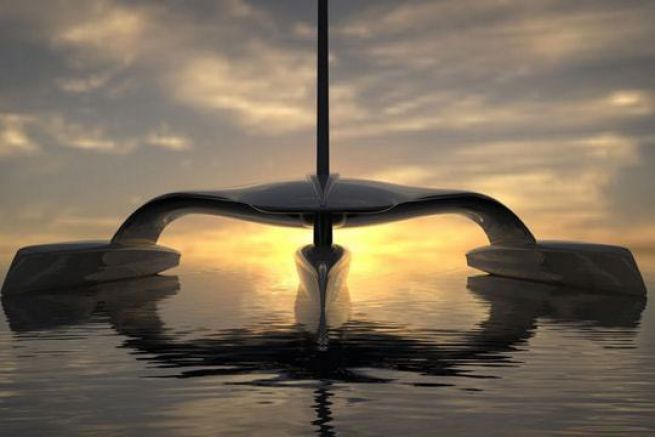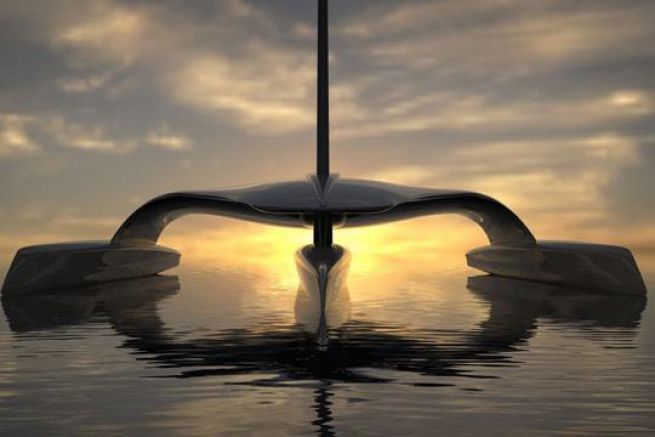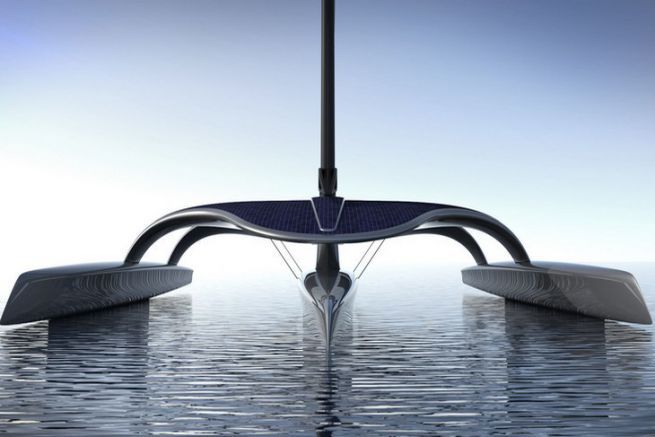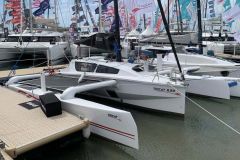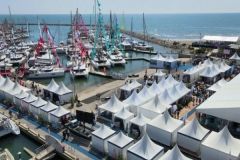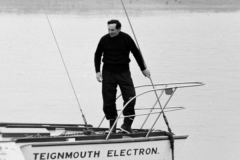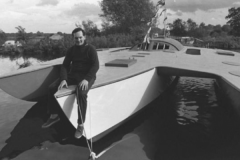In the footsteps of the Mayflower
The MARS project is being developed in partnership with Plymouth University, autonomous ship specialist MSubs and Shuttleworth design studio. With a length of more than 100 feet â?" 32.5 m â?" the Mayflower Autonomous Ship Research, named MARS, will use only wind and solar technology to propel itself.
It will house a wide variety of drones, used to perform many experiments, during its journey. MARS will collect a lot of meteorological, oceanographic and climate data for research.

After a full year of testing, the Atlantic crossing is scheduled for 2020. It will mark the 400 e anniversary of the Mayflower, a 17th century merchant ship that carried 102 English immigrants - including the Pèlerins - between Plymouth (England) and the Plymouth Colony in Massachusetts (USA) in 1620.
"Mars will be a true world first and will function as a research platform to conduct many scientific experiments during its journey. It will be a test bed for new navigation software and alternative forms of energy, with many advances in solar, wave and sail technology." explains Professor Kevin Jones, Dean of the Faculty of Science and Engineering.
An ecological and autonomous vessel
MARS will be a trimaran, as this is the most efficient hull shape to move forward with low engine speed. The hull configuration was developed to reduce drift, while keeping the solar panel high enough above the water to reduce wave impact. Without the need for accommodation, the center hull has been kept low to the water and the hulls and deck are raised. This allows waves to pass through the boat and greatly reduces roll. The outer hull was designed to shave the water and reduce drag by 8%.

The two masts, which will house the sails, will allow a top speed of approximately 20 knots. They are designed to operate with one or two sails hoisted, allowing three sail combinations to vary the wind speed. Each sail is controlled by a single sheet and they can be stowed in the center platform to save space. Stowing the sails to motor reduces drift and eliminates shadows cast on the deck's solar cells. The masts remain upright as they house the navigation lights.
The solar cell areas required for safe and efficient navigation in large waves were too large. Therefore, a folding wing system was developed to increase the solar cell area by 40% in calm sailing conditions.
A crossing of the Atlantic could only take between 7 and 10 days with optimal wind conditions.

Currently, this multi-million pound project is seeking potential partners and funders.
At MSubs, they explain " Technological advances have propelled land and air transportation to new levels of intelligent autonomy. It's a different story for the sea. The civilian maritime world has not yet been able to exploit the autonomous drone technology that has been used effectively in situations inaccessible to humans. One might ask, if we can send robots to Mars (Mars Exploration Rover) to manage research autonomously, then why can't we sail an unmanned autonomous vessel across the Atlantic Ocean and in the long run, around the world? That's what we want to answer with Mars."
Technical specifications
| Total length | 32,5 m |
| Width | 16,8 m |
| Sail surface | 159 m2 |
| Hull construction | Composite (glass / aramid / foam) |
| Bridge construction | Composite (carbon / nomex) |
| Max. speed electric motor | 12.5 knots |
| Max. sailing speed | 20 knots |
| Autonomy with a speed of 5 knots (electric motor) | Unlimited |
| Exterior design | Shuttleworth Design Ltd |
| Naval architecture | Shuttleworth Design Ltd |
| Structural engineering | Shuttleworth Design Ltd |
